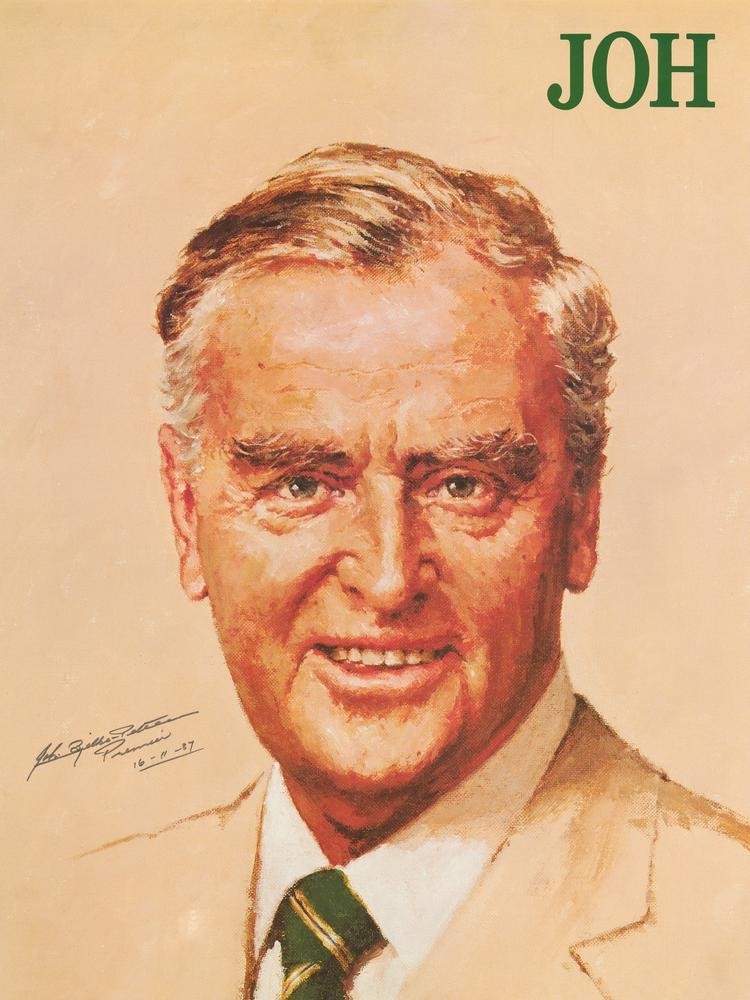A few weeks ago the press were reporting that a group of Australian scientists had lost their experimental scramjet prototype after the rocket that was carrying it crashed into the sea off Norway. This unfortunate event made me wonder what had happened to the Cape York Spaceport project that had been set to transform the north of Queensland into a major international space hub some twenty years ago.
Sir Joh Bjelke-Petersen was Queensland's longest serving Premier, ruling the State in his own inimitable way from 1968 to 1987. It was towards the end of this tenure, in 1986, that Stan Schaetzel from the Hawker De Havilland company floated the idea of a rocket launch facility in Cape York to the Queensland Government. It was Cape York's proximity to the equator that made it an attractive proposition for launching rockets. If successful the Cape York Spaceport could have been the first commercial space facility in the world. Sir Joh was taken with the idea and commissioned the Institution of Engineers in Australia to undertake a preliminary study. This was the first of a proliferation of proposals, scoping studies and feasibility studies. Many of these studies can be found in the library through our One Search catalogue. Two rival groups developed proposals. The Australian Spaceport Group were backed by Comalco and favoured a site close to the mining port of Weipa on the western coast of Cape York. This group withdrew from the race after a year or two and the Cape York Space Agency was chosen to act as the co-ordinator for the development of the project by the Queensland Government. This group was formed as a consortium of companies including Mayne Nickless, Boral, the Commonwealth Bank, Price Waterhouse, TNT, Brambles and the Shimuzu Corporation. The Cape York Space Agency wished to build a spaceport on the east coast of Cape York at Temple Bay.

Signed poster of Joh Bjelke-Petersen dated 16.11.87
The Cape York Space Agency was proposing to use Russian Zenit rockets in an operation launching mostly United States satellites and negotiating this international minefield between the U.S.A. and the Soviet Union was only one of the difficulties. An article on the Courier Mail of 20 March 1991 points towards some of the problems that would ultimately sink the idea.
Sir Joh Bjelke-Petersen had the quaint idea that with his backing and direction, $500,000 in taxpayer seed money and the enthusiasm of private sector friends, Queensland was a shoo-in for the space age. With a divided local business community, ignorant of the demands and disciplines of space technology, legal disputes over the ownership of the actual site of the proposed station and protests from Aboriginal inhabitants, it was never going to be that easy.
In the early 1990s the push for Aboriginal land rights was gaining momentum and then Premier Wayne Goss was committed to developing a Land Rights Bill in Queensland. Against this background the Wuthathi Aboriginal Council retained a team of barristers to launch a High Court action against the spaceport on land rights and environmental grounds. Their objections are set out in an article in the Koori Mail in August 1991.
Wuthathi and Kukuy'au tribal representatives maintained their stand against the proposed Space Port at Cape York when they met the Senate Standing Committee on Transport, Communications and Infrastructure in Cairns recently. ... The representatives from the Wuthathi and Kukuy'au Aboriginal tribes said that a space port in the Temple Bay vicinity would not be in the best interests of the majority of the Aboriginal tribes of the Cape York Peninsula. At a land rights meeting held recently at Lockhart River attended by representatives from all Cape York Aboriginal and some Torres Strait Island communities representatives voted to support the Wuthathi and Kukuy'au tribes stance of no space port in Cape York Peninsula. Aboriginal representatives say the main reasons for this stance are that it infringes on traditional lands, it is not a viable enterprise that will benefit the rightful owner, it is merely an excuse to open up Cape York to massive tourist and unaboriginal development, and that the development of such a project will have a catastrophic result on the environment.

Space port Cape York by Nicholas Mau (State Library of Victoria)
These objections could perhaps have been overcome through negotiation and compromise but the real problem with the project seems to have been financial. Ominously the spaceport project was included in a book A herd of white elephants? : some big technology projects in Australia edited by Pam Scott and published in 1992. The spaceport is examined as a possible part of the next generation of white elephants.
Australia cannot afford to allocate public resources to a space program which is not carefully and critically assessed. Without this Australia could find itself repeating the experience of the US military who built a $3.5 billion spaceport on the west coast of America and promptly mothballed it on completion. Amid the din of entrepreneurial advocacy, there has been a lack of critical attention paid to the spaceport, perhaps emanating from the belief that any space-related activity is likely to bolster the cause of Australia's space industry. But will the benefits trickle down? And does this belief warrant the dearth of rigorous analyses which should normally be associated with a potential large allocation of public resources? Would a spaceport soak up funds that might otherwise go to more worthwhile space endeavours? ... In the wake of a perception of government inaction, some space enthusiasts have lent support to an initiative that has come from private consortiums. That the project has not progressed further in the past four years is largely due to the fact that those consortiums have either judged the project to be commercially unviable, or that they have not been able to obtain significant financial support from Canberra.
Perhaps it is just as well the the once high profile project seems to have been quietly shelved when it turned out that the money for the spaceport was not forthcoming. It joins a number of ambitious plans for the North that have failed to live up to their promise. On the other hand it is perhaps a shame that the enterprising Australian scientists had to ship their scramjet all the way to Norway for it to crash into the sea when if things had worked out differently it could have been launched right here in Queensland.

Comments
Your email address will not be published.
We welcome relevant, respectful comments.